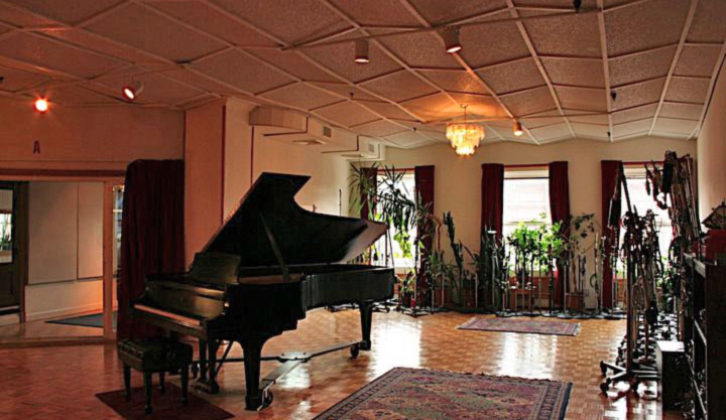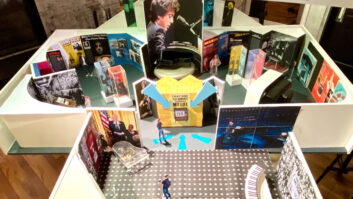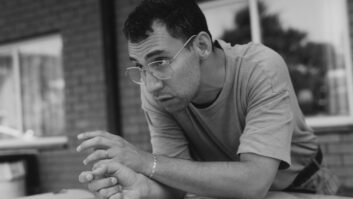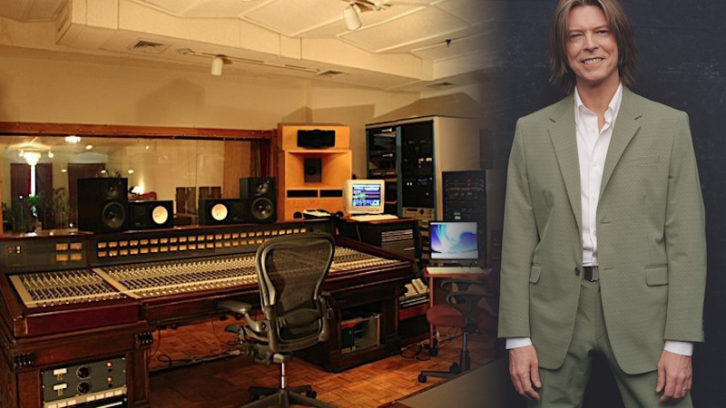
In the summer of 2000, David Bowie began recording Toy, a uniquely personal album with the aim of revisiting some of his earliest, pre-fame songs [See Part 1 for more]. Working at New York City’s Sear Sound with the help of his killer live band, producer Mark Plati and engineer Pete Keppler, Bowie completely immersed himself in recording the album…and then shelved it. Now, more than two decades later, the ‘lost’ album will be finally be released on Friday, January 7, 2022. Looking back at the sessions and their aftermath, Plati and Keppler separately shared the full, tumultuous story of Toy (comments have been lightly edited for clarity and brevity).
• • •
Keppler: We tracked the album to Logic, of all things, which I’d never used before and was scrambling to learn as I tracked a David Bowie album! I knew Pro Tools, but I could not wrap my head around Logic; it had recently transitioned from being a sequencer into an audio recorder and was not as easy to use as it is now.
There were six basic positions in the studio, plus David was in an iso next to the control room and Mike Garson playing a nine-foot Steinway and keyboards in another room. Guitar amps were in the smaller isolation booths. [Guitarist] Earl Slick was playing out in the main room—he wanted to feel the drums—and Gail Ann Dorsey was in there on bass, too. All that was live-miked and happening at the same time; Sear is a great facility for doing that. My only complaint was that the live room wasn’t particularly live, so we opened the fire escape stairwell and threw some mics down there—kind of old-school, but it worked.
Gallery: Inside Sear Sound Studio C
Plati: You can hear the excitement of the band. A lot of David’s vocals are first takes—him with the band, just going for it. Some of the moments are chilling; they really affect you.
Keppler: Watching David sing was a trip. It was a 12-foot by 8-foot iso booth, and normally I would see him through the window at the Telefunken ELA M 251 he was on. One day, Mark was playing guitar in the control room while we were cutting a live track, and I felt him nudge me with the headstock of his guitar. He motioned to the window because David sounded amazing. And I turned around and David wasn’t there! I peeked my head around enough to see: He was against the back wall of the booth, eight or 10 feet off the mic, just belting his brains out. He sounded like he was right in my face; I’ve never seen or heard anything like it before or since.
Plati: Slicky said, “Let’s put acoustic guitars on everything; it’s kind of a Keith Richards trick.” I said sure, so after we had a basic take with the band, he and I would go in with acoustic guitars and play along with it—one pass and move on.
Keppler: David was always tuned into what was going on, regardless of what he looked like he was doing. He would pipe up and say, “Mark, can you play that again? I’ve got an idea,” or “Can you and Slicky go out and do a part?” The radar was always on.
Plati: So one day I’m mixing, auditioning tracks and David says, “Oh, what’s that?” “That’s just your lead with these acoustics.” “That’s cool. Why don’t we print a few passes like that?” I’m one for printing all kinds of things, so I did a few, but as I was midway through mixing, I didn’t go back to the previous songs. In 2020, the idea came up to finish the rest, and now that’s CD Number Three in Toy:Box.
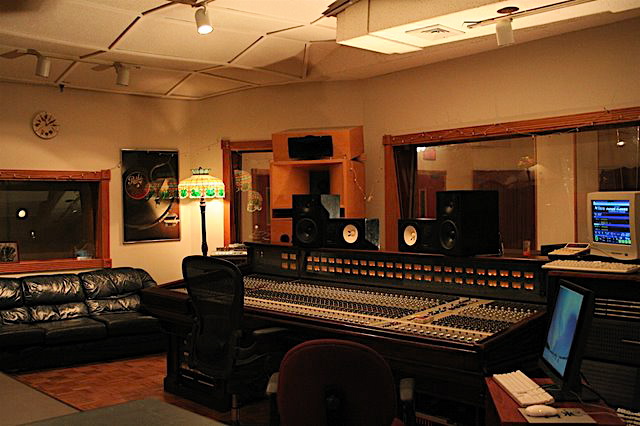
Keppler: When he was on stage, he was “David Bowie”—you know, there’s no mistaking who that persona is—but when he would come into the control room, he would recline back on the couch or maybe even lay down, and he’d have his cardigan and his spectacles on, doing crossword puzzles or reading. And you’d think, “Who’s that really cool, little old man over there? Oh yeah—it’s David Bowie.” It was really sweet; I have such fond memories of him doing that.
Plati: After the original sessions, we added other people like [violinist] Lisa Germano, just to take it a little off the road of being more of a straight-up rock record. Tony Visconti did strings—that was one of the coolest sessions, because you have to remember, I’m a Seventies kid, so even though I’d been with David almost four years by then, I would still have these ‘pinch me’ moments.
Keppler: After the session at Sear, I went back on the road mixing the Eels, and the album was basically Mark’s baby. As luck would have it, early 2002, the first major show in downtown Manhattan after 9/11 was the Tribeca Film Festival. David had signed up to play six songs at this festival show in Battery Park, and his engineer couldn’t make the gig. Mark called me up: “Hey, you want to mix a Bowie show?” And I’m like, “Hell yeah!” That turned into mixing the last four touring years of David’s career.
